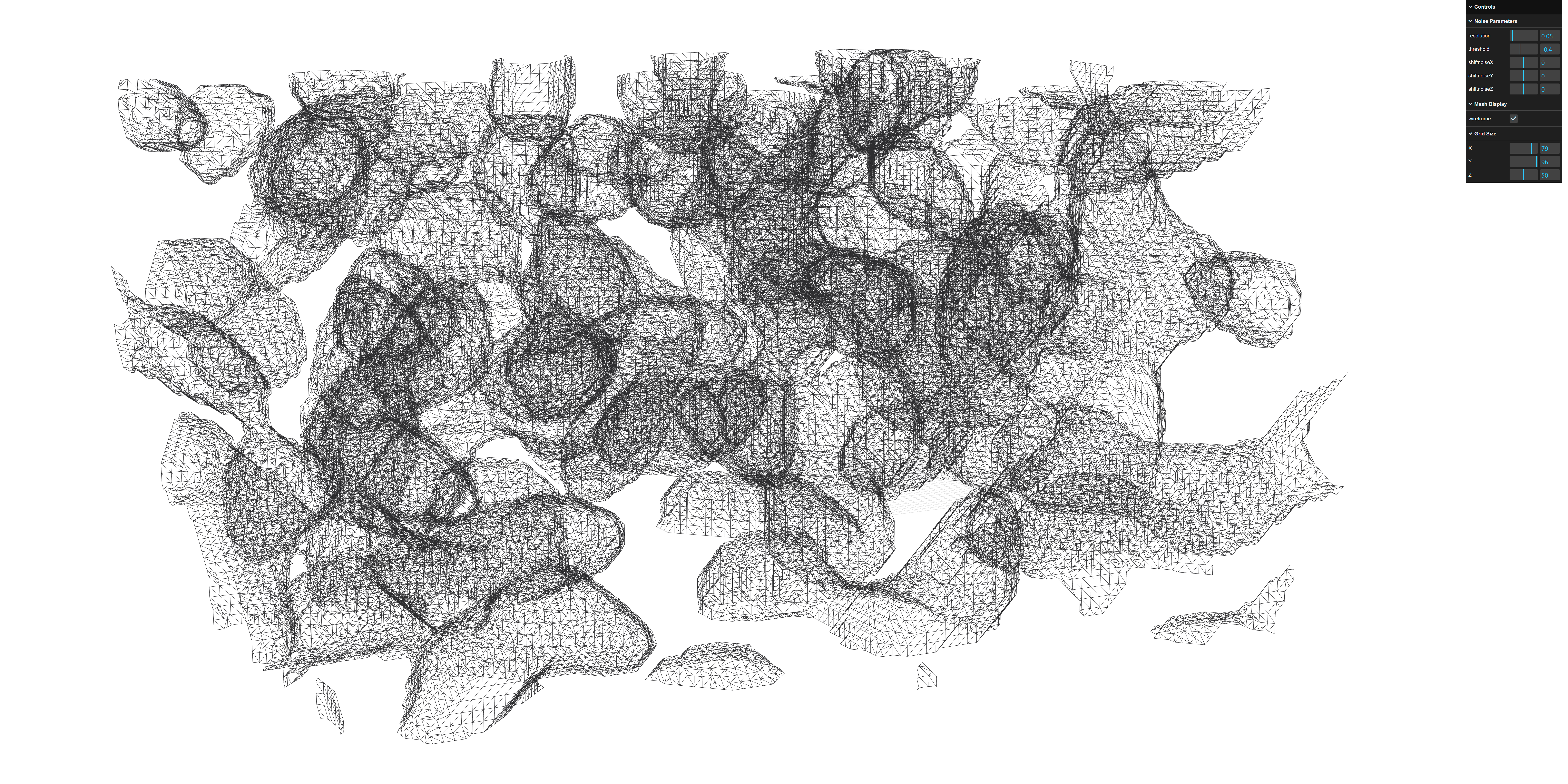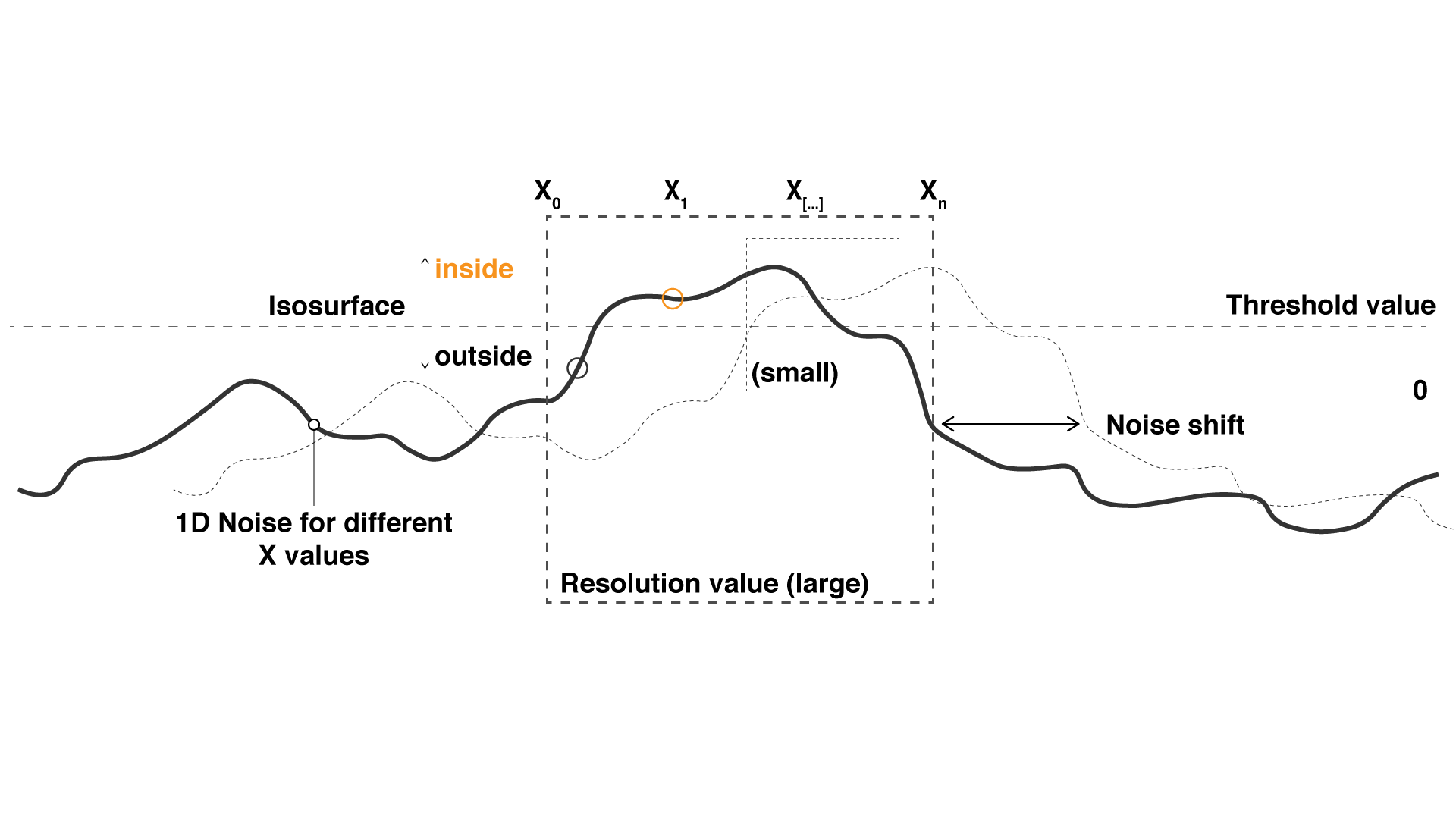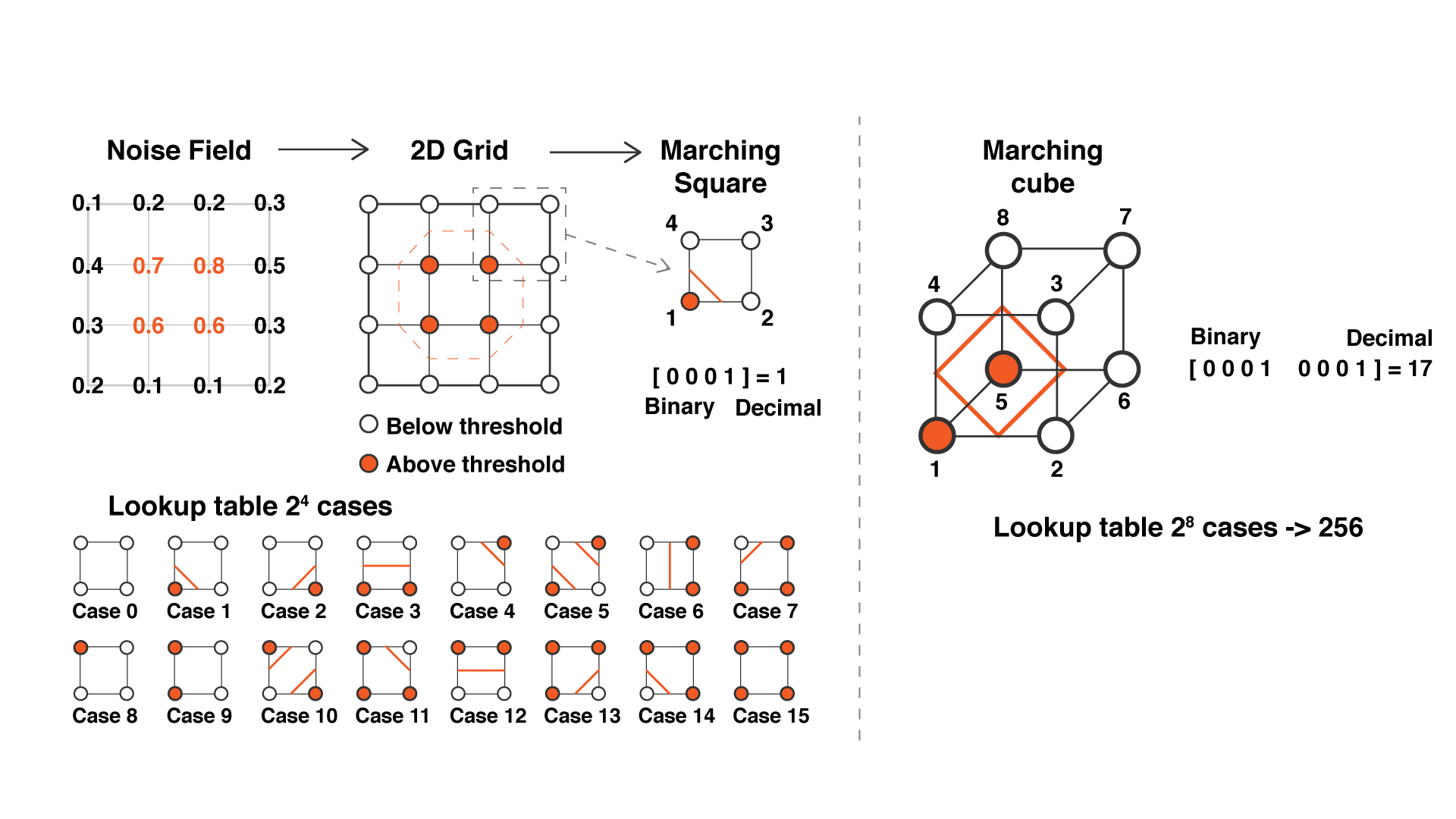
NoiseCrafted Dimensions
Introduction: NoiseCrafted Dimensions harnesses the power of noise algorithms and the innovative use of the marching cubes technique. This project is dedicated to creating complex, richly detailed, and infinitely varied 3D landscapes and models. From the undulating terrains of alien planets to the intricate details of fantastical architecture, NoiseCrafted Dimensions offers a toolkit for developers, artists, and researchers to explore and create without limits. Objective: The primary objective is to provide a comprehensive platform that enables the creation of procedurally generated environments and objects with user input to give artistic control in order to gain inspiration for architectural designs. By leveraging noise algorithms, such as Simplex, in conjunction with the marching cubes algorithm, the user can explore structres of different size density and scale.

Simplex Noise
To customize the patterns generated by simplex noise in your web app, you can adjust three key parameters: Adjust the Threshold: To control the density of your patterns, modify the threshold value. A lower threshold will fill more space with the pattern, making it denser. A higher threshold will do the opposite, creating sparser patterns. This is ideal for fine-tuning how filled or empty your generated textures appear. Change the Resolution: If you need to alter the level of detail in your patterns, adjust the resolution. Increasing the resolution will smooth out the noise, making transitions gentler and features broader, perfect for large-scale patterns. Decreasing the resolution increases the detail, adding more intricacy to your textures, which is great for close-up views. Shift the Noise: To explore different parts of the noise landscape without changing the underlying pattern, simply shift the noise. This effectively pans your view across the noise field, offering endless variations of terrain or texture patterns without needing to regenerate the noise. By tweaking these parameters, you can achieve a wide range of visual effects and customize the generated noise to match the specific needs of your web app.

Marching Squares / Cubes
The Marching Cubes algorithm is a technique used to render 3D surfaces from a scalar field, commonly applied in computer graphics for visualizing isosurfaces. Here's a concise overview of how it works: Scalar Field Analysis: The algorithm operates on a 3D scalar field, where each point in a grid has a value indicating the density or intensity at that location. Isovalue Determination: An isovalue is chosen, which serves as a threshold to differentiate the surface of interest from the rest of the scalar field. Points with values higher than the isovalue are considered part of the surface, while those with lower values are not. Cube Examination: The space is divided into a grid of cubes by considering groups of eight adjacent points. The algorithm marches through each cube in the grid to determine how the isosurface intersects the cube based on the isovalue. Polygonization: For each cube intersected by the isosurface, the algorithm calculates where the surface intersects the cube's edges and generates vertices at these points. It then connects these vertices to form polygonal faces, typically triangles, approximating the shape of the isosurface within the cube. The Marching Cubes algorithm efficiently converts volumetric data into a polygonal mesh, enabling the visualization of complex 3D shapes and surfaces in a way that is both detailed and manageable for rendering.